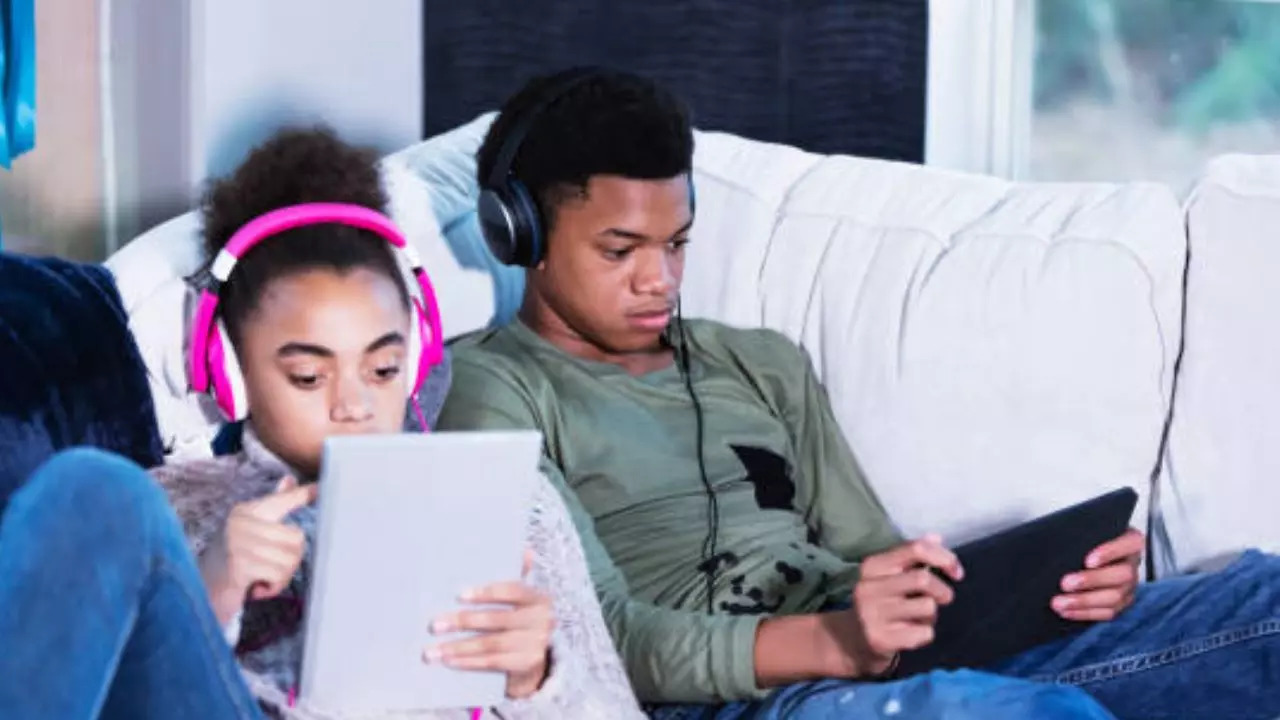-
news
-
Health
-
mental health
Survey reveals half of US teens spend more than four hours per day on screens
A CDC survey shows that half of American teens ages 12-17 spend more than four hours per day on screens, potentially impacting mental health. Teens with high screen time reported significantly more anxiety and depression than teens with minimal use. Urban teenagers and older age groups showed even greater screen use. read on.

Survey shows half of US teens spend more than four hours on screens per day (Image credit: iStock)
A new survey shows that half of young Americans ages 12 to 17 spend at least four hours a day on screens, whether it’s on a smartphone, computer or television. Conducted by the US Centers for Disease Control and Prevention (CDC), the survey highlights the increasing integration of technology into the lives of teens, which has led to a steady increase in daily screen time across the United States.
However, the effects of prolonged screen exposure may not be entirely positive. The survey found that levels were significantly higher among teens who spent four or more hours per day on screens. Worry And DepressionNotably, about 27 percent of these teens admitted to experiencing anxiety within the past two weeks, compared to only 12.3 percent among teens with less screen time. Similarly, self-reported depression was particularly more prevalent among heavy screen users, with 26 percent indicating depressive symptoms, compared to only 9.5 percent of teens who spent fewer hours on screens.
The CDC survey, which covered data from mid-2021 to late 2023, also highlighted trends in screen use by age, gender, income and location. Although the gender difference in screen time was minimal – 48 percent of boys and 52.5 percent of girls spent four or more hours per day on screens – age played a role. Among younger teens (12 to 14 years old), 45.6 percent reported high screen time, which increased to 55 percent for those 15 to 17 years old. Notably, only 27 percent of teens reported using screens for two hours or less per day. ,
Interestingly, family income does not affect the amount of screen time teens spend. However, location made a difference, as urban teens were more likely to use screens at higher rates than rural teens, with rates of 51.4 percent and 43.3 percent, respectively.
Amanda Ng, a researcher at CDC’s National Center for Health Statistics and lead author of the report, said prior studies have linked high screen time with adverse health outcomes. Excessive screen time has been linked to poor sleep patterns, increased fatigue, and symptoms of anxiety and depression. The CDC team emphasized that, while technology is a staple in modern teen life, understanding its psychological impact is essential to guiding healthy screen habits among young people.
The report, published Oct. 30 as an NCHS data brief, sheds light on how daily screen habits can impact the mental well-being of American teens.
Get the latest news live on Times Now with breaking news and top headlines on mental health, wellness and more from around the world.


